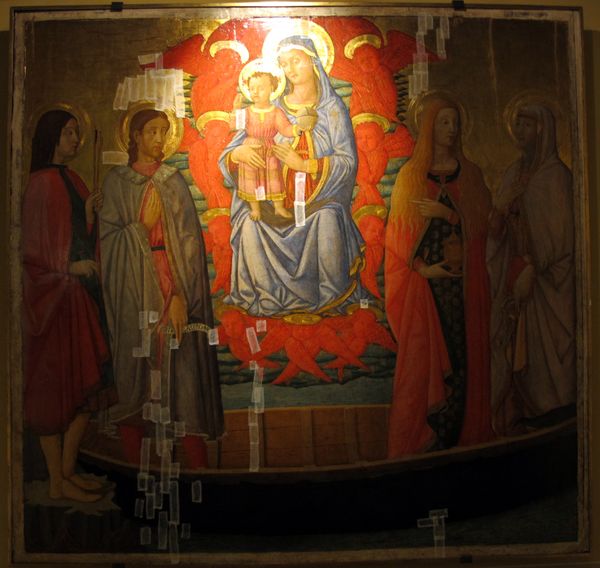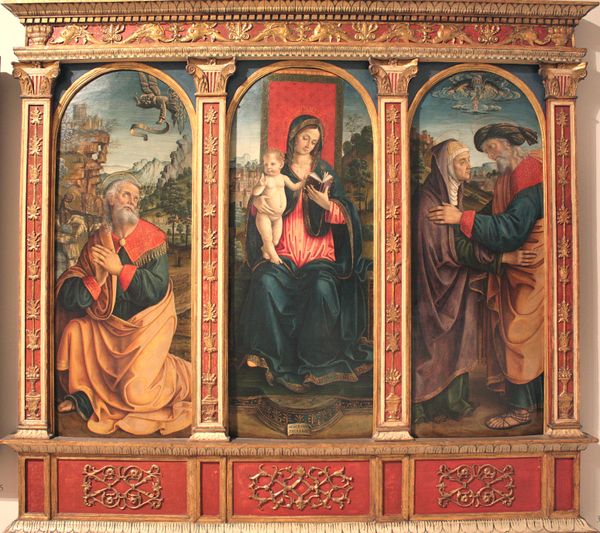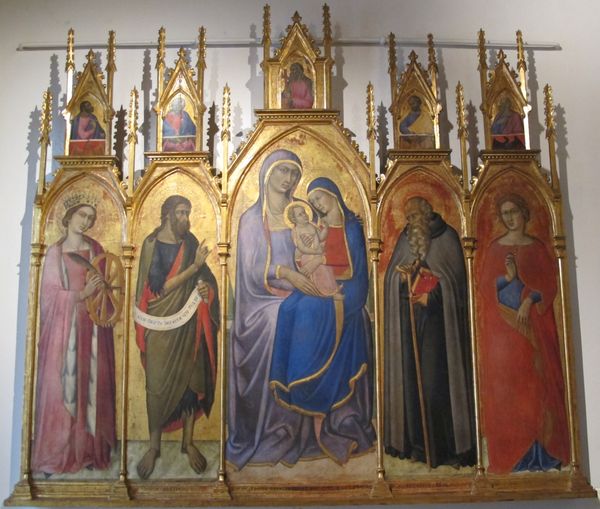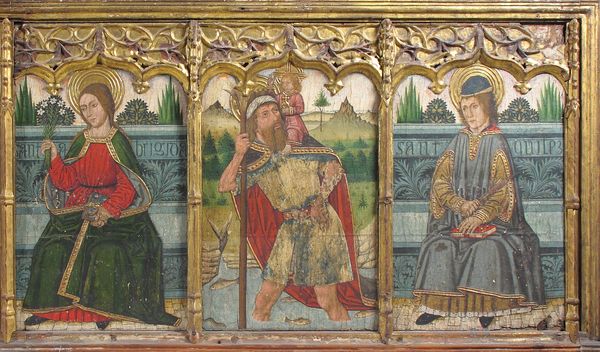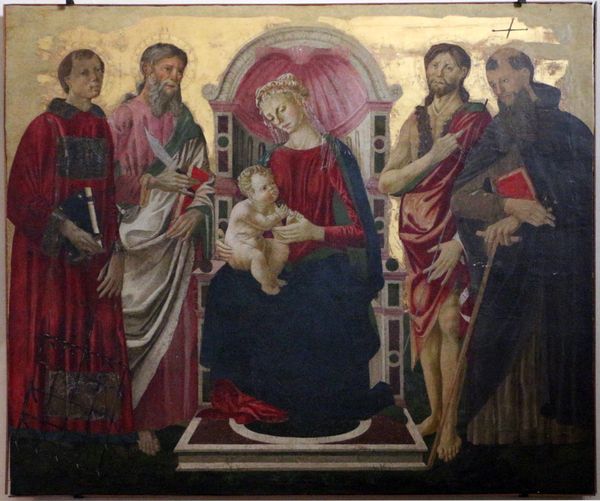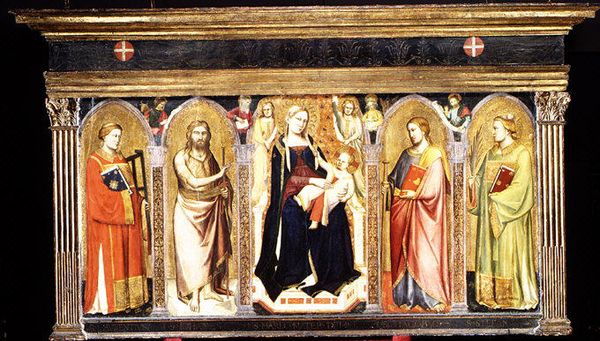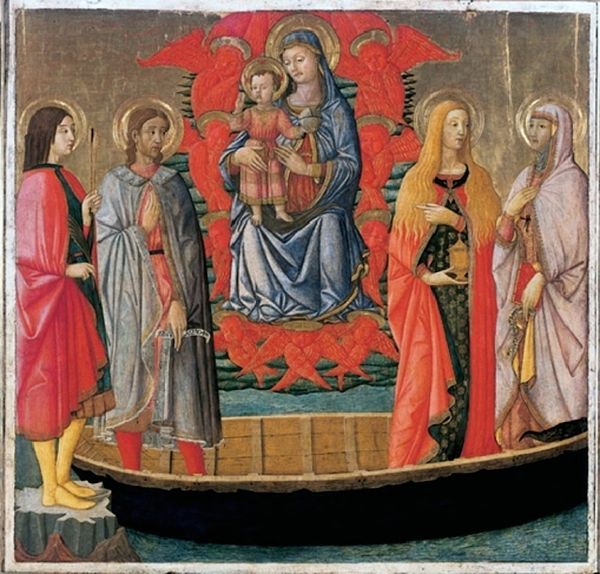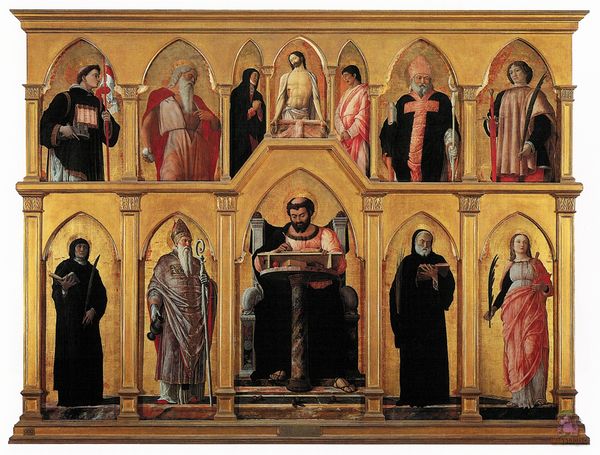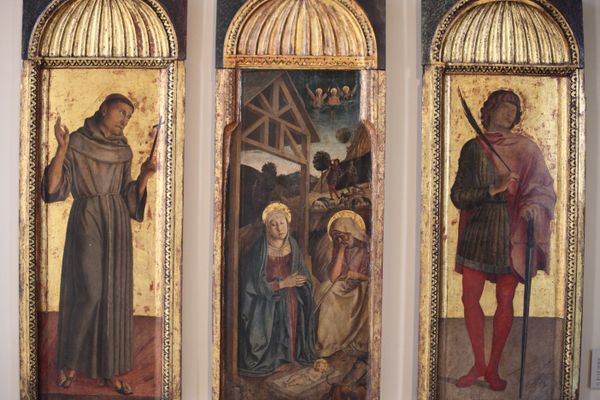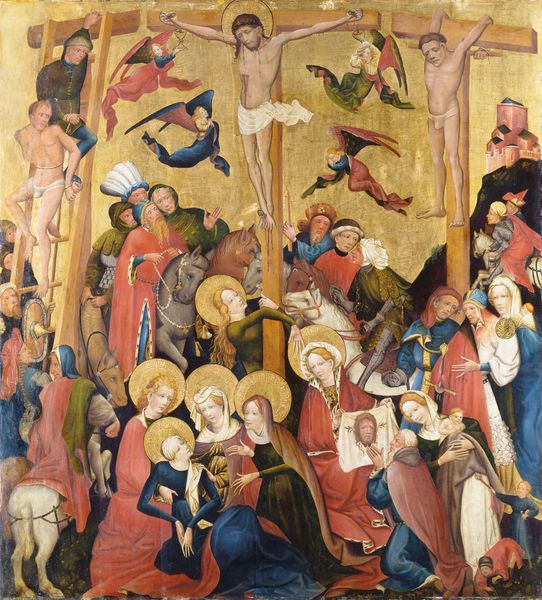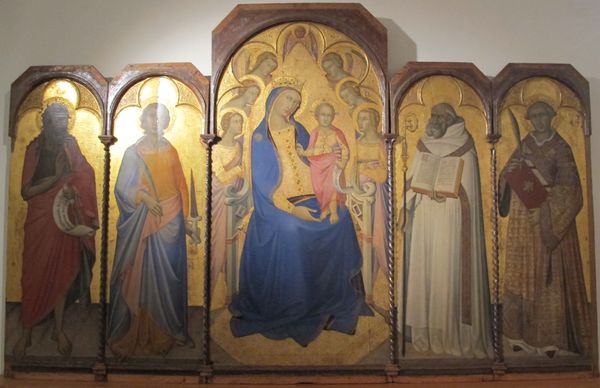
panel, tempera, oil-paint
#
portrait
#
panel
#
tempera
#
oil-paint
#
figuration
#
oil painting
#
history-painting
#
italian-renaissance
#
early-renaissance
Copyright: Public domain
Editor: This is "Madonna col bambino in trono e santi" by Lo Scheggia, dating back to 1470. It looks like it was created using tempera and oil paint on a panel. It strikes me as a pretty formal, almost staged scene, typical for its time, I suppose. What’s your take? What social or historical context am I missing here? Curator: You’re right to pick up on the formality. Consider the socio-political role of art at this time. Commissioned works like this weren’t just devotional pieces; they were statements. Who do you think commissioned this and for what purpose? Editor: Hmmm, maybe a wealthy family trying to project an image of piety and status? It’s clearly for public display, with that grand scale. Curator: Exactly. The placement in a church, perhaps a family chapel, was key. Now, look at the figures surrounding the Madonna. Who are they, and what do they signify in the context of 15th-century Florentine society? Think about the Medici family’s influence on art and patronage. Editor: Okay, so we have saints surrounding the Virgin and Child, obvious symbols of religious devotion and virtue. Could their presence also allude to specific virtues that the commissioning family wished to associate themselves with? Curator: Precisely. Think about how the Medici used religious imagery to subtly legitimize their own power. This wasn’t just about faith; it was about visually reinforcing the established social order. Also notice how idealized and rather impersonal the characters look in their faces and robes, devoid of strong individuality. Editor: So the artwork operates on multiple levels: religious devotion, social positioning, and a statement of power… It's like a visual PR campaign from the Renaissance. Curator: Precisely. Looking at art as a reflection of social structures really enriches our understanding. I hope it encourages you to continue diving deep and to ask not only "what?" but "why?". Editor: That's definitely given me a lot to think about – and look for – in Early Renaissance art. Thank you.
Comments
No comments
Be the first to comment and join the conversation on the ultimate creative platform.
